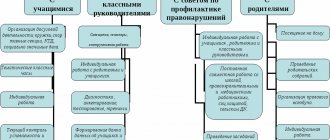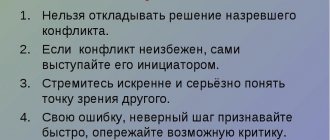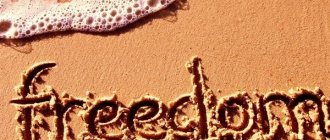| Kind of work: | Essay |
| Date added: | 21.01.2020 |
- This type of work is not a scientific work, it is not a finished final qualifying work!
- This type of work is a finished result of processing, structuring and formatting collected information intended for use as a source of material for independent preparation of educational work.
If you have a hard time understanding this topic, write to me on WhatsApp, we’ll look into your topic, agree on a deadline, and I’ll help you!
If you want to learn how to correctly carry out and write abstracts on any subject, then on the page “what is an abstract and how to do it” I wrote in detail.
Introduction
Experimenter (from the Latin experimentalum - experiment, experience) - a method of studying a phenomenon under controlled conditions. It differs from observation in that it involves active interaction with the object being studied. As a rule, an experiment is carried out as part of a scientific research and serves to test hypotheses and establish cause-and-effect relationships between phenomena.
The relevance of this topic is due to the fact that people are constantly experimenting, this helps in research and the possibility of something new.
I liked the textbook “Experimental and Research Activities of Various Aspects,” authored by Novikov. A.M. He presented the types of experiments and their classification. When preparing my work, I also used the works of such authors as Demidova, A.V., Zagvyazinsky, V.I., Kozhukhar, V.M., Stepin V.S.
Purpose: to study experiment as a research method, define the term “experiment”, characterize the types of experiments, consider the advantages and disadvantages in the process of conducting experiments.
Topic: experiment as a research method.
Types of experiments
A physical experiment is a method of studying nature, which consists in studying natural phenomena in specially created conditions. The study of a new physical phenomenon begins with observation. Immediately after the observation, a qualitative analysis follows, during which some, often not entirely clear and unambiguous, ideas about the nature of the phenomenon are formulated, as well as ways for its experimental study are outlined.
For example, the English botanist Brown tested it in 1827, at that time inventing a new lens for a microscope. When he used a microscope to look at a suspension of flower pollen in water, he was amazed by the scope that opened up in the field of view of the lens. Brown himself and many other scientists believed that Brownian motion was caused by a special “vital force” that must be in the pollen.
A physical experiment, although related to observation, is no less significantly different from it. This is the next, qualitatively new stage of sensory perception of the phenomenon under study. An experiment includes observation as a necessary component.
During the experiment, not only the phenomenon is reproduced, but its dependence on accompanying conditions and parameters is also studied, and measurements are taken.
A computer experiment (numerical experiment) is an experiment on a mathematical model of the object under study using a computer, which consists of calculating other parameters of the model depending on one parameter of the model, and on this basis draws conclusions about the properties of the object described by the mathematical model.
This type of experiment can only be related to experiments to a limited extent, since it does not reflect natural phenomena, but is only a numerical implementation of a mathematical model created by man. In fact, if the mathematical model is incorrect, its numerical solution may strictly differ from the physical experiment.
To check the correctness of the model building algorithm, we use a test set of initial data for which the final result is known in advance or determined in some other way.
For example, if calculation formulas are used in modeling, it is necessary to select several options for initial data and calculate them “manually”. These are test tasks. After building the model, run tests on the same variants of the input data and compare the simulation results with the conclusions obtained from the calculation. If the results coincide, then the algorithm is designed correctly; if not, you need to look for the reason for their discrepancy and eliminate it.
The test data may not reflect the real situation at all and may not have any meaningful content. However, the results obtained during testing may lead to a change in the original information or symbolic model, especially in the part where the semantic content is embedded.
In order to make sure that the created model reflects the properties of the original that were considered during the modeling, it is necessary to select a test case with real source data.
Psychological experiment - conducted in special conditions A psychological experiment is an experiment conducted in special conditions with the aim of obtaining new scientific knowledge through the purposeful intervention of a researcher in the life of a subject.
Invisible Gorilla
Perceptual blindness is a phenomenon when a person is so overloaded with impressions that he does not notice anything around him
Attention is completely absorbed by only one object. Each of us suffers from this type of visual blindness from time to time.
Article on the topic
Absent-mindedness - the ghost of genius? Exercises for concentration
Daniel Simons showed subjects a video of people wearing black and white T-shirts throwing a ball to each other. The task was simple - count the number of throws. While two groups of people were throwing a ball, a man dressed in a gorilla suit appeared in the center of the sports ground: he pounded his chest with his fists, just like a real monkey, and then calmly walked away from the field.
After watching the video, participants in the experiment were asked if they noticed anything strange on the site. And as many as 50% answered negatively: half simply did not see the huge gorilla! This is explained not only by our focus on the game, but also by the fact that we are not ready to see something incomprehensible and unexpected in ordinary life.
Structure of a psychological experiment
Science differs from any other field of human activity in its goals, means, motives and conditions in which scientific activity is carried out. The goal of science is to comprehend the truth, and the path to comprehending the truth lies through scientific research.
Research, in contrast to spontaneous forms of knowledge of the environment, is based on the norm of activity - the scientific method. Implementation implies awareness and fixation of the purpose of research, research tools (methodology, approaches, methods, techniques), and orientation of research towards the reproducibility of results.
There is a distinction between empirical and theoretical research, although this distinction is relative. Most studies tend to be theoretical and empirical in nature. Each study is not carried out in isolation, but as part of an integral scientific program or for the development of a scientific direction. E. Fromm studied narcissistic personality traits as part of a scientific program to study the causes of “malignant aggression.”
K. Lewin's program served as the basis for his research on rights, achievement motivation, quasi-demands, group dynamics, etc. The program proposed by B.F. Lomov to study the influence of the communication process on cognitive processes, led to the study of the dynamics and effectiveness of joint solving of sensory problems, memorizing material, comparing the processes of individual and group thinking, etc.
By its nature, research can be divided into fundamental and applied, monodisciplinary and interdisciplinary, analytical and complex, etc.
Fundamental research is aimed at understanding reality without taking into account the practical effect of applying this knowledge.
Applied research is carried out to obtain knowledge that must be used to solve a specific practical problem.
Monodisciplinary research is carried out within the framework of one science (in this case psychology). As in the case of interdisciplinarity, these studies require the participation of specialists from various fields and are carried out at the intersection of several scientific disciplines. This group includes genetic research, research in the field of technical psychophysiology, as well as research at the intersection of ethnopsychology and sociology.
Complex studies are carried out using a system of methods and techniques with the help of which scientists try to fix the maximum possible (or optimal) number of significant parameters of the reality under study.
A thought experiment in philosophy, physics and some other fields of knowledge is a type of cognitive activity in which the structure of a real experiment is reproduced in the imagination. Typically a thought experiment is conducted within a model (theory) to test its consistency. Ein Gedankenexperiment kann Widersprüche in den internen Postulaten des Modells oder deren Unvereinbarkeit mit externen (in Bezug auf das Modell) als bedingungslos wahr angesehenen Prinzipien (z. B. dem Energieerhaltungssatz, dem Kausalitätsprinzip usw.) aufdecken.conditions experience for obtaining new scientific knowledge when the help of a targeted study of interference in the life activity of the subject.
Validity is in psychology
In psychology, the concept of validity refers to the experimenter’s confidence that he measured exactly what he wanted using a certain technique, and shows the degree of consistency between the results and the technique itself relative to the tasks set. A valid measurement is one that measures exactly what it was designed to measure. For example, a technique aimed at determining temperament should measure precisely temperament, and not something else.
Validity in experimental psychology is a very important aspect, it is an important indicator that ensures the reliability of the results, and sometimes the most problems arise with it. A perfect experiment must have impeccable validity, that is, it must demonstrate that the experimental effect is caused by modifications of the independent variable and must be completely consistent with reality. The results obtained can be generalized without restrictions. If we are talking about the degree of this criterion, then it is assumed that the results will correspond to the objectives.
Validity testing is carried out in three ways.
Content validity assessment is carried out to find out the level of correspondence between the methodology used and the reality in which the property under study is expressed in the methodology. There is also such a component as obvious, also called face validity, it characterizes the degree of compliance of the test with the expectations of those being assessed. In most methodologies, it is considered very important that the assessment participant sees an obvious connection between the content of the assessment procedure and the reality of the assessment object.
Construct validity assessment is performed to obtain the degree of validity that the test actually measures those constructs that are specified and scientifically valid.
There are two dimensions to construct validity. The first is called convergent validation, which checks the expected relationship of the results of a technique with characteristics from other techniques that measure the original properties. If several methods are needed to measure some characteristic, then a rational solution would be to conduct experiments with at least two methods, so that when comparing the results, finding a high positive correlation, one can claim a valid criterion.
Convergent validation determines the likelihood that a test score will vary with expectations. The second approach is called discriminant validation, which means that the technique should not measure any characteristics with which theoretically there should be no correlation.
Validity testing can also be criterion-based; it, guided by statistical methods, determines the degree of compliance of the results with predetermined external criteria. Such criteria can be: direct measures, methods independent of the results, or the value of social and organizational significant performance indicators. Criterion validity also includes predictive validity; it is used when there is a need to predict behavior. And if it turns out that this forecast is realized over time, then the technique is predictively valid.
Structure of a psychological experiment
Science differs from any other field of human activity in its goals, means, motives and conditions in which scientific activity is carried out. The goal of science is to comprehend the truth, and the path to comprehending the truth lies through scientific research.
Research, in contrast to spontaneous forms of knowledge of the environment, is based on the norm of activity - the scientific method. Implementation implies awareness and fixation of the purpose of research, research tools (methodology, approaches, methods, techniques), and orientation of research towards the reproducibility of results.
There is a distinction between empirical and theoretical research, although this distinction is relative. Most studies tend to be theoretical and empirical in nature. Each study is not carried out in isolation, but as part of an integral scientific program or for the development of a scientific direction. E. Fromm studied narcissistic personality traits as part of a scientific program to study the causes of “malignant aggression.”
K. Lewin's program served as the basis for his research on rights, achievement motivation, quasi-demands, group dynamics, etc. The program proposed by B.F. Lomov to study the influence of the communication process on cognitive processes, led to the study of the dynamics and effectiveness of joint solving of sensory problems, memorizing material, comparing the processes of individual and group thinking, etc.
By its nature, research can be divided into fundamental and applied, monodisciplinary and interdisciplinary, analytical and complex, etc.
Fundamental research is aimed at understanding reality without taking into account the practical effect of applying this knowledge.
Applied research is carried out to obtain knowledge that must be used to solve a specific practical problem.
Monodisciplinary research is carried out within the framework of one science (in this case psychology). As in the case of interdisciplinarity, these studies require the participation of specialists from various fields and are carried out at the intersection of several scientific disciplines. This group includes genetic research, research in the field of technical psychophysiology, as well as research at the intersection of ethnopsychology and sociology.
Complex studies are carried out using a system of methods and techniques with the help of which scientists try to fix the maximum possible (or optimal) number of significant parameters of the reality under study.
A thought experiment in philosophy, physics and some other fields of knowledge is a type of cognitive activity in which the structure of a real experiment is reproduced in the imagination. Typically a thought experiment is conducted within a model (theory) to test its consistency. A thought experiment can reveal contradictions in the internal postulates of the model or their incompatibility with external principles (in relation to the model) that are considered unconditionally true (for example, the law of conservation of energy, the principle of causality, etc.).
How to predict the future using statistics
In 2011, the famous American psychologist Daryl Bem published an article that proved the possibility of clairvoyance. This conclusion was not the product of his wild imagination, but was based on ten years of research in which hundreds of people participated. Many suspected that Boehm decided to stage something like Sokal’s scam and expose psychology with a fake article with obviously absurd conclusions. But by all methodological standards the paper was very convincing.
In one of Bem's experiments, two screens were placed in front of participants - they had to guess which one was hiding the image. The picture was generated randomly immediately after the choice was made. If participants performed well on the task, it would indicate that they could somehow sense the future. The experiment used two types of images: neutral and pornographic.
Participants guessed pornographic images 53% of the time, slightly more often than they would have if their choice was due to pure chance. Given the large number of experiments, Boehm could claim that foresight exists.
Later, experts discovered that when analyzing the results, he used not entirely correct techniques. As a rule, a research result is considered reliable if the probability that it was obtained by chance does not exceed 5%. But there are many ways to reduce this value to the desired level: change the initial parameters of the analysis, add or remove the required number of examples from the sample, use more successful hypotheses after collecting data.
When the article on clairvoyance was published, social scientists Joseph Simmons, Lief Nelson, and Uri Simonson realized that science was heading towards its own collapse. They built several computer models and found that using quite standard statistical techniques, they could increase the rate of false positive results several times. This means that methods that are formally scientific can easily lead to completely absurd conclusions.
To illustrate this, scientists conducted an experiment that confirmed that listening to the song “When I'm Sixty-four” makes the listener look a year and a half younger.
“Everyone knew that it was wrong to use such techniques, but they thought that this violation was significant in its significance - something like crossing the road in the wrong place. It turned out to be more like a bank robbery,” Simmons concluded.
Benefits of a Thought Experiment
- Common goals. Thought experiments allow participants to achieve intrapersonal goals through the development of self-awareness. These may even be mental goals.
- Any number of players. In a coaching situation, you can conduct a thought experiment with only one participant. At the other extreme, this can be done with a large group of participants who then work in parallel without interacting with each other (as in the example above).
- Anytime, anywhere. Most theoretical experiments do not require special materials or equipment. All that is required is to think within the given structure of the situation.
- Proven technology. This type of activity has received empirical support from various schools of psychology. Behavior therapists, for example, have demonstrated the effectiveness of mental role-playing. Psychologists who have studied creativity have repeatedly demonstrated the positive effects of visualization.
A critical experiment is an experiment whose result establishes beyond any doubt whether a particular theory or hypothesis is true. This experiment must produce a predictable result that cannot be inferred from other generally accepted hypotheses and theories.
Too good to be true
The easiest way to create sensational research is through deception. The famous social psychologist Diederik Stapel used fabricated data in several dozen scientific articles. Stapel's research spread across newspapers and magazines with great speed, he received several prestigious scientific awards, was published in Science and was considered one of the leading experts in his field.
Marshmallow experiment
In the experiment, children were asked to choose between one small reward—such as a marshmallow—that they could get immediately, or a double reward if they could wait a little longer. It later turned out that children who waited for the second award became more successful in adulthood. The study became very popular and influenced some school programs.
"Poses of strength" and "poses of weakness"
Participants in the experiment took one of two poses for two minutes: they leaned back in a chair and put their feet on the table (“power pose”) or crossed their arms over their chest (“weakness pose”). As a result, participants from the first group felt more confident and more often agreed to take risks in gambling. Those who sat in a strong position increased their testosterone levels, while those who sat in a weak position increased their cortisol levels. In repeated experiments, only one effect was reproduced: “power poses” helped participants feel more confident, but did not change their behavior or hormonal levels.
Associations with old age make you move slower
Participants in the experiment were asked to solve several puzzles. If they included words associated with old age—forgetful, elderly, lonely—then participants left the room at a slower pace.
Warm objects make you more friendly to others
Participants in the experiment were briefly given a cup of hot or cold coffee to hold and then asked to rate the person's personality based on a short description. Participants who held a cup of hot coffee rated the person as more likeable. In another experiment, participants were given an object in a warm or cold package and then asked to keep it or give it to a friend. If the item was in a warm package, participants were more likely to choose the second option. Repeated experiments with a larger sample did not yield the same results. Looks like wearing warm clothes won't make you an altruist.
Willpower is depleted when we resist temptations
Two plates were placed in front of the experiment participants - with cookies and radishes. In the first group, participants were allowed to eat cookies, and in the second, only radishes. Each participant was then asked to solve an impossible puzzle. Participants who were given only radishes in the first part of the experiment gave up significantly earlier than others. Repeated experiments did not confirm the results.
***
In world psychology, much has already been done to make research more reliable and reproducible. In Russia this problem is yet to be realized.
“In Russian psychology, the problems of the crisis are mainly concerned with young scientists, who are largely oriented toward Western science,” Ivan Ivanchey, associate professor at RANEPA, told Knife. — Control over the quality of publications in Russian is generally not very high. Journals rarely reject papers, so many low-quality studies are published. Small samples are often used, which also reduces the likelihood of successful replication. There is a suspicion that if we seriously look into the issue of reproducibility of Russian-language works, we can find many problems. But no one is directly involved in this.”
Classification of experiment
- Laboratory experiment. A distinctive feature of the conditions in which it is carried out is that these conditions are specially created by the experimenter. The main objective is to ensure high internal validity. It is typical to assign one independent variable. The main method of managing external variables is elimination (liquidation). External validity is lower than in a field experiment.
- Field or natural experiment. An experiment is conducted under conditions over which the experimenter has no control. The main goal is to ensure high external validity. A characteristic feature is the complex independent variable. The main ways to control external variables are randomization (the levels of external variables in the study exactly correspond to the levels of these variables in life, i.e., outside the study) and constancy (the level of the variable is made the same for all participants). Internal validity is generally lower than in laboratory experiments.
- Formative experiment. The experimenter irreversibly changes the participant, forming traits that were not there before or developing traits that are already present.
Experimental design
Experimental design methods make it possible to minimize the number of necessary experiments, establish a rational sequence and conditions for conducting research, depending on their nature and the required accuracy of the results. If for some reason the number of experiments is already limited, then the methods provide an estimate of the accuracy with which the results will be obtained in this case. The methods take into account the random nature of the dispersion of the properties of the tested objects and the characteristics of the equipment used. They are based on methods of probability theory and mathematical statistics.
Experimental Design Stages
- Determining the purpose of the experiment (determining characteristics, properties, etc.) and its nature (defining, control, comparative, research).
- Determining the conditions for conducting the experiment (availability or availability of equipment, work schedule, financial resources, number and staffing, etc.). Select the type of testing (normal, accelerated, laboratory-reconstructed, bench, field, full-scale or in-service).
- Determination and selection of input and output parameters based on the collection and analysis of preliminary information. Input parameters (factors) can be deterministic, i.e. determined and controlled (observer dependent), and random, i.e. determinable but not controllable.
- Determination of the required accuracy of measurement results. The type of sample or object under study is selected taking into account the degree of its correspondence to the real product in terms of condition, structure, shape, size and other characteristics.
The assignment of a degree of accuracy is influenced by the manufacturing and operating conditions of the object in the creation of which these experimental data are used. The accuracy of experimental data also significantly depends on the volume (number) of tests - the more tests, the higher (under the same conditions) the reliability of the results.
For a number of cases (with a small number of factors and a known law of their distribution), it is possible to calculate in advance the minimum required number of tests, the implementation of which will allow obtaining results with the required accuracy.
5. Drawing up a plan and conducting an experiment - the number and order of tests, the method of collecting, storing and documenting data.
The order of testing is important when the input parameters (coefficients) when studying the same object during the test take on different values. For example, in step-by-step fatigue tests, the fatigue strength depends on the order of loading because damage accumulates differently, resulting in different fatigue strength values.
The order of experiments is also important during research: depending on the chosen order, when experimentally searching for the optimal ratio of parameters of an object or process, it may be necessary to conduct more or fewer experiments. These experimental problems are similar to mathematical problems of numerical search for optimal solutions.
6. statistical processing of experimental results, construction of a mathematical model of the behavior of the studied characteristics. The need for processing arises due to the fact that selective analysis of individual data that is not related to other results, or their incorrect processing can not only reduce the value of practical recommendations, but also lead to incorrect conclusions.
7. explanation of the results and formulation of recommendations for their use, clarification of the methodology for conducting the experiment. Reducing the intensity of work and reducing the duration of experiments is achieved through the use of automated experimental complexes.
Such a complex includes test benches with automatic setting of operating modes (allows you to simulate real operating modes), automatically processes the results, conducts statistical analysis and documents research. But the responsibility of the engineer in these studies is also great: clearly formulated test goals and a correctly made decision make it possible to accurately find the weak point of the product, reduce setup costs and iterate the design process.
Heinz's dilemma
Psychologist Lawrence Kohlberg studied moral development. He believed that this is a process that continues throughout life. To confirm his guesses, Kohlberg presented children of different ages with complex moral dilemmas.
The psychologist told the children a story about a woman who was dying - cancer was killing her. And by a stroke of luck, one pharmacist allegedly invented a medicine that could help her. However, he asked for a huge price - $2,000 per dose (although the cost of manufacturing the medicine was only $200). This woman's husband - his name was Heinz - borrowed money from friends and collected only half the amount, $1,000.
Article on the topic
TEST: What kind of animal are you?
Arriving at the pharmacist, Heinz asked him to sell the medicine for his dying wife cheaper, or at least on credit. However, he replied: “No! I created a cure and I want to get rich." Heinz fell into despair. What was to be done? That same night he secretly entered the pharmacy and stole the medicine. Did Heinz do a good job?
This is the dilemma. Interestingly, Kohlberg did not study the answers to the question, but the reasoning of the children. As a result, he identified several stages in the development of morality: starting from the stage when the rules are perceived as absolute truth, and ending with the observance of one’s own moral principles - even if they run counter to the laws of society.
Stages of experimental activity
- Formulation of a cognitive task, a goal associated with the experimental method.
- Selection of equipment and design of experimental setup.
- A statement of the physical principle on which the experimental method will be applied.
- Observation of a phenomenon, process.
- Measurement (reading the necessary measurements on the equipment, obtaining some experimental data).
- Description, interpretation of experimental data and their analysis.
- Formulation of conclusions, conclusion, practical significance of the results obtained.
Features of experiment as a research method
The experiment demonstrates a cause-and-effect relationship, i.e. dependence of the phenomenon being studied on known controlled conditions.
An experiment implies the active intervention of a scientist in the research process; control of this process, as conditions change, is carried out by the scientist himself. Use at least two measurement methods. One of them measures process conditions, the other registers changes occurring in the objects under study. It is necessary to have a hypothesis, that is, an assumption about the nature of the relationship being studied, which will be confirmed or refuted by the experiment.
Advantages and disadvantages of the experiment
Advantages:
- Ability to study cause-and-effect relationships between events;
- high objectivity, since the results of the experiment are actual events;
- Ability to test the effectiveness of marketing decisions, especially for new products (test marketing);
- Ability to control the environment;
Flaws:
- A probabilistic statement about the strength and nature of the influence of a given independent variable on a dependent variable;
- Uncertainty in the transferability of test results to other environmental conditions;
- The presence of a time lag (lag) between the completion of the experiment and the adoption of marketing decisions;
- Difficulty in eliminating the influence of extraneous influences;
- high time and financial costs;
- high level of risk.







